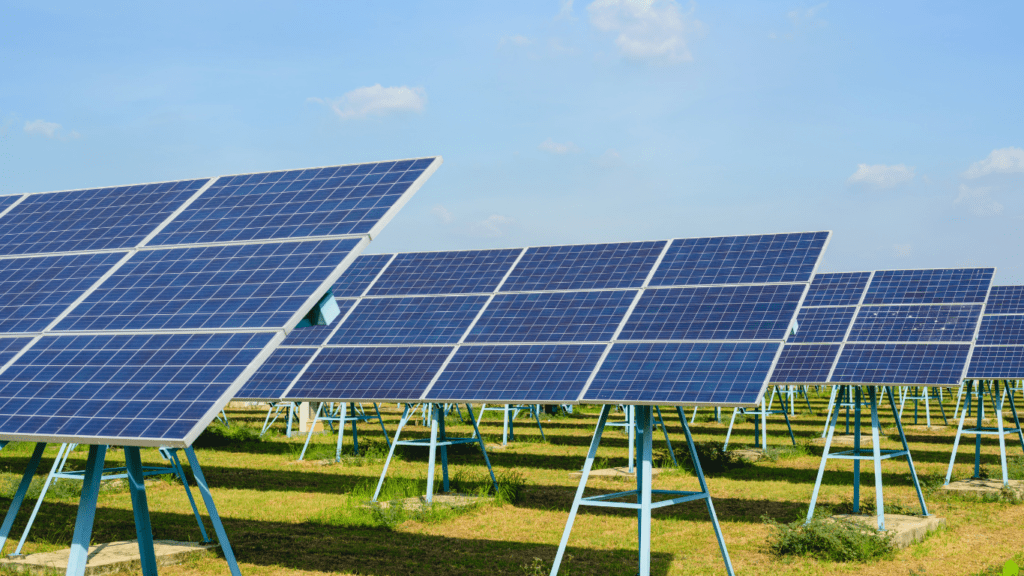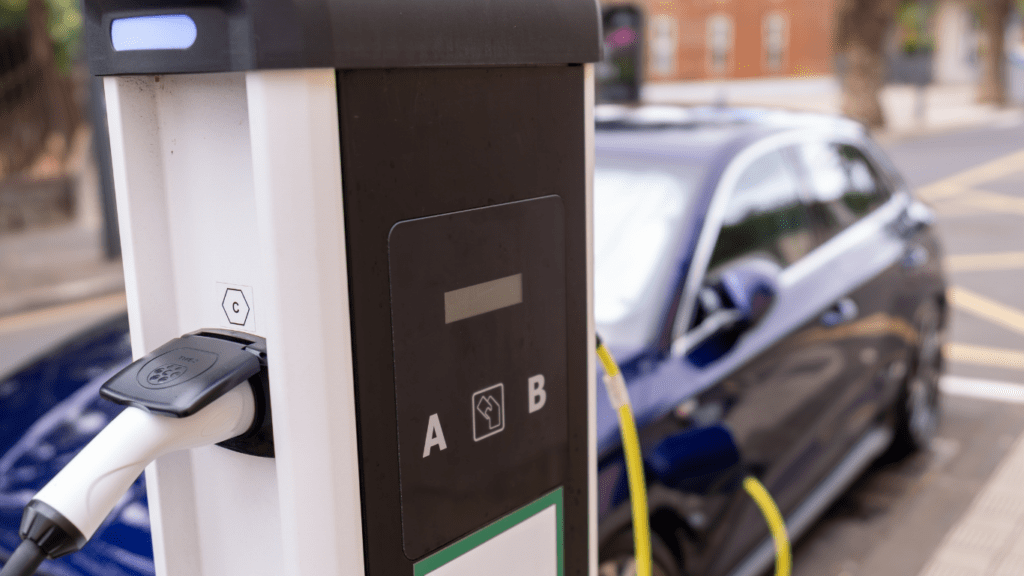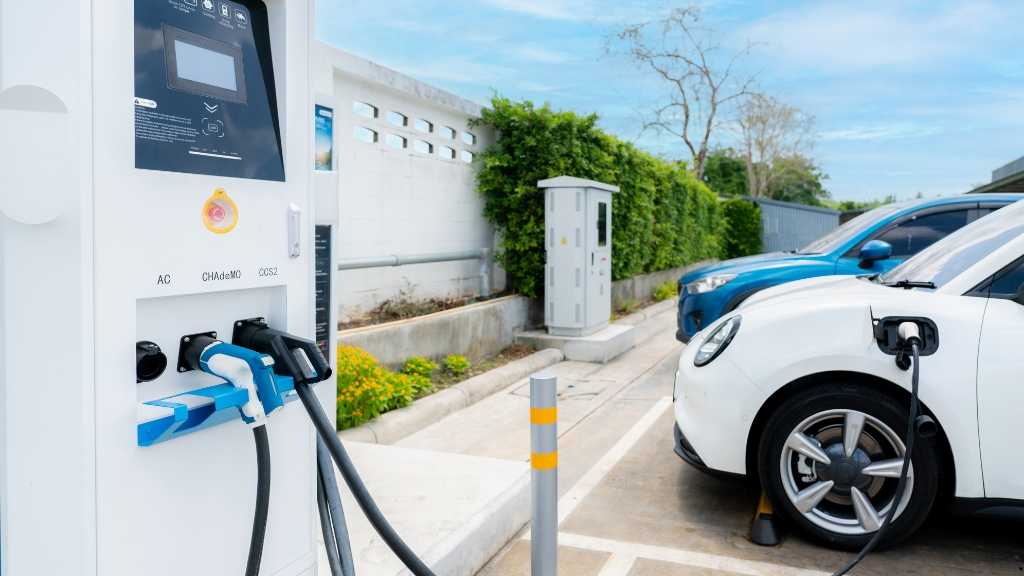Overview of Renewable Energy Sources
Renewable energy sources play a crucial role in powering electric vehicles (EVs). They offer sustainable alternatives to fossil fuels.
Solar Energy
Solar energy uses photovoltaic (PV) panels to convert sunlight into electricity. Many EV owners use rooftop solar panels for home charging stations. Solar farms, covering large areas, may also charge public EV chargers. According to the National Renewable Energy Laboratory, the US had over 97.2 GW of installed solar capacity by the end of 2020.
Wind Energy
Wind energy involves harnessing wind power through turbines. Wind farms supply significant electricity to the grid, a portion of which powers EVs. The American Wind Energy Association states that the US had 122.5 GW of installed wind capacity in 2019. Wind energy often complements solar, providing clean power when sunlight is unavailable.
Hydropower
Hydropower generates electricity using flowing or falling water. Dams, rivers, and pumped storage facilities typically produce it. The US Department of Energy notes that hydropower supplied about 6.6% of the nation’s electricity in 2020. It supports the grid’s stability, making it a reliable renewable source for charging EVs.
Biomass Energy
Biomass energy converts organic materials like plant and animal waste into electricity or fuel. It often utilizes waste products, making it an eco-friendly option for EV charging. As per the Biomass Power Association, the US had approximately 16 GW of installed biomass capacity in 2019. Biomass can fill gaps left by other renewable sources, ensuring continuous power for EVs.
Importance of Renewable Energy for Electric Vehicles

Renewable energy significantly enhances the sustainability of electric vehicles (EVs). By shifting away from fossil fuels, we can maximize environmental benefits and economic advantages while ensuring energy security.
Environmental Benefits
Renewable energy reduces greenhouse gas emissions that contribute to climate change. For example, solar and wind energy produce no direct emissions, unlike coal and natural gas. By using renewables to power EVs, we cut down on air pollution and contribute to cleaner air and water.
Economic Impact
Renewable energy sources lower operational costs for EVs by reducing fuel expenses. Increased adoption of renewables also drives job creation in industries like wind and solar, fostering economic growth. Additionally, renewables offer price stability since they aren’t subject to the same market fluctuations as fossil fuels.
Energy Security
Using domestic renewable energy enhances national energy security. Countries reduce their dependency on imported fossil fuels, which can be volatile in price and supply. By diversifying energy sources, we improve grid resilience and ensure a stable power supply for EVs.
Current Integration of Renewable Energy in EV Charging
I’ve seen significant advancements in integrating renewable energy into EV charging infrastructure. Leveraging renewables enhances sustainability and ensures a greener future.
Solar-Powered Charging Stations
Solar-powered charging stations have become increasingly widespread. These stations use photovoltaic panels to convert sunlight into electricity, providing a clean and sustainable option for charging EVs. Many installations are found in public areas, workplaces, and homes. For example, Envision Solar’s EV ARC™ stations offer off-grid solar charging solutions, ensuring accessibility even in remote locations.
Wind-Powered Charging Solutions
Wind energy contributes significantly to EV charging, particularly in regions with consistent wind patterns. Wind turbines generate electricity that feeds into the grid, supplying power to charging stations. Some areas, like Texas and certain parts of Europe, utilize wind turbines to supplement solar energy, ensuring a more stable and continuous power supply. Danish company Vestas has pioneered wind-powered EV charging solutions by integrating wind turbines directly with charging stations.
Utility-Scale Renewable Projects
Utility-scale renewable projects have scaled up to meet the growing demand for EV charging. These large-scale projects typically involve solar farms, wind farms, or a combination of multiple sources. Companies like Tesla’s SolarCity and NextEra Energy have developed extensive grids that support EV charging infrastructure. By integrating these renewable energy sources, the grid can manage higher demand while maintaining a sustainable energy flow.
Technological Advances and Innovations
Innovations in renewable energy and electric vehicles (EVs) are transforming the landscape. Emerging technologies are enhancing efficiency, reliability, and sustainability.
Smart Grid Technology
Smart grid technology optimizes the distribution and consumption of electricity. By integrating renewable energy sources, grids can manage fluctuating supply and demand. For example, smart grids use real-time data to distribute power efficiently, reducing energy waste and balancing loads. This technology supports EV charging during peak renewable production, aligning energy supply with demand.
Battery Storage Systems
Battery storage systems store and release energy when needed. These systems ensure consistent power supply from renewable sources, even during periods of low production. For instance, Tesla’s Powerwall and Powerpack systems enable homeowners and businesses to harness solar energy, storing it for nighttime or cloudy days. Effective storage solutions enhance the feasibility of using renewable energy for EV charging.
Vehicle-to-Grid (V2G) Technology
Vehicle-to-Grid (V2G) technology allows EVs to interact with the power grid. EVs can store excess energy and return it to the grid when demand is high. This bidirectional flow stabilizes the grid, enhances energy efficiency, and offers additional revenue streams for EV owners. For instance, Nissan’s LEAF has V2G capability, enabling it to serve as both a car and a mobile energy asset.
Emerging technologies are driving the integration of renewable energy with electric vehicles, making sustainable transportation more efficient and accessible.
Challenges and Barriers
Although renewable energy can power electric vehicles (EVs) sustainably, significant challenges and barriers hinder its widespread adoption.
Infrastructure Development
Building the necessary infrastructure for renewable energy to support EV charging presents a major challenge. Establishing sufficient solar-powered and wind-powered charging stations requires extensive planning and investment. Many regions lack the grid capacity to handle increased loads from renewable sources and EVs. Upgrading existing grids to integrate renewable energy and accommodate growing EV numbers is both time-consuming and costly. Urban areas, with limited space for new infrastructure, face additional complexities. Addressing these challenges demands strategic planning and coordinated efforts among public and private stakeholders.
Policy and Regulatory Hurdles
- Policy and regulatory barriers also affect the transition to renewable-powered EVs.
- Inconsistent policies across regions obstruct seamless integration.
- Some jurisdictions have stringent regulations and lengthy approval processes for renewable energy projects, delaying implementation.
- Incentive programs for renewable energy and EV adoption vary, affecting market growth unpredictably.
- Streamlining policies, offering uniform incentives, and expediting approval processes can mitigate these barriers.
- Governments play a pivotal role in shaping a conducive regulatory environment to enhance renewable energy integration with EVs.
Cost Considerations
Cost remains a significant barrier in leveraging renewable energy for EVs. Initial setup costs for solar panels and wind turbines for charging stations are high. Although operational costs drop over time, the upfront investment deters many stakeholders. Additionally, the cost of integrating renewable energy into existing grids can be substantial, necessitating large capital outlays. Competitive pricing with fossil fuels is critical for widespread adoption. Technological advancements and economies of scale could potentially reduce these costs, making renewable energy a more viable option for powering EVs in the future.
Future Prospects and Opportunities
Renewable energy’s role in powering electric vehicles continues to expand. Let’s explore the future prospects, focusing on emerging technologies, government initiatives, and market trends.
Emerging Technologies
Innovative technologies will shape the future of renewable energy and EV integration. AI and machine learning optimize energy management, forecasting demand, and enhancing grid resilience. Blockchain technology secures transactions in EV charging, ensuring transparency and reducing fraud.
Advanced materials like solid-state batteries promise higher energy density and faster charging times, revolutionizing EV performance. Hydrogen fuel cells offer another clean energy source, especially for longer-range vehicles, complementing battery electric vehicles.
Government Initiatives
Governments worldwide are adopting policies to promote renewable energy and EVs. Incentives like:
- tax rebates
- grants
- subsidies
encourage renewable energy infrastructure development and EV purchases. Regulatory frameworks are being established to streamline renewable projects, reducing approval times. Countries like Germany and Norway are leading, providing strong policy support and ambitious targets for renewable energy adoption. International collaborations, such as the Paris Agreement, drive global efforts to reduce carbon emissions and promote sustainability.
Market Trends
Market trends indicate a significant shift towards renewable energy and EVs. The declining costs of solar and wind energy make them more competitive with fossil fuels. Increased investment in renewable energy projects and EV infrastructure stimulates economic growth and job creation. The rising consumer demand for sustainable products drives innovation in EV technology and renewable energy integration. Corporate sustainability commitments from major companies, including Google and Apple, further boost market adoption of renewables and EVs, setting industry standards and influencing consumer behavior.




